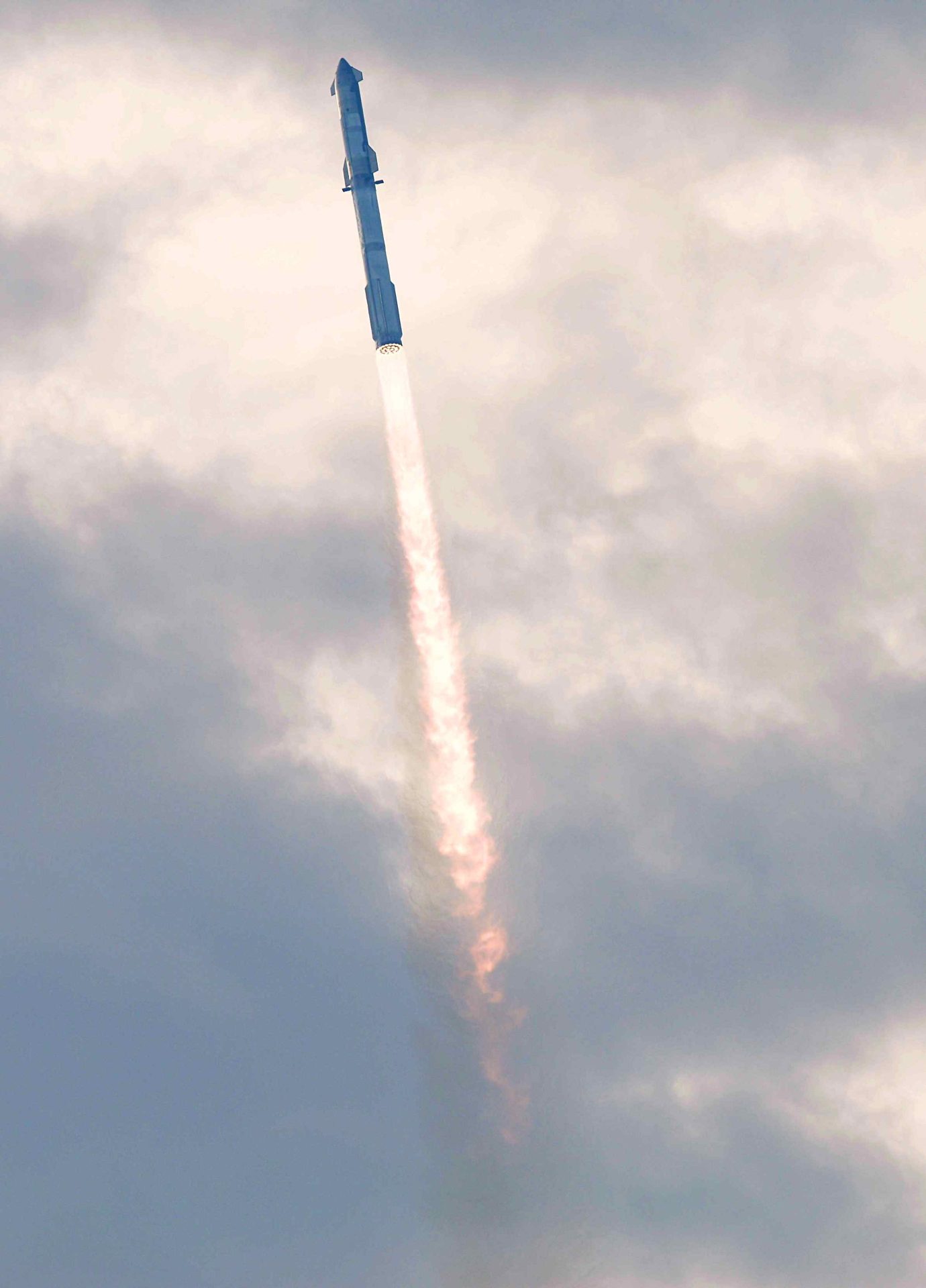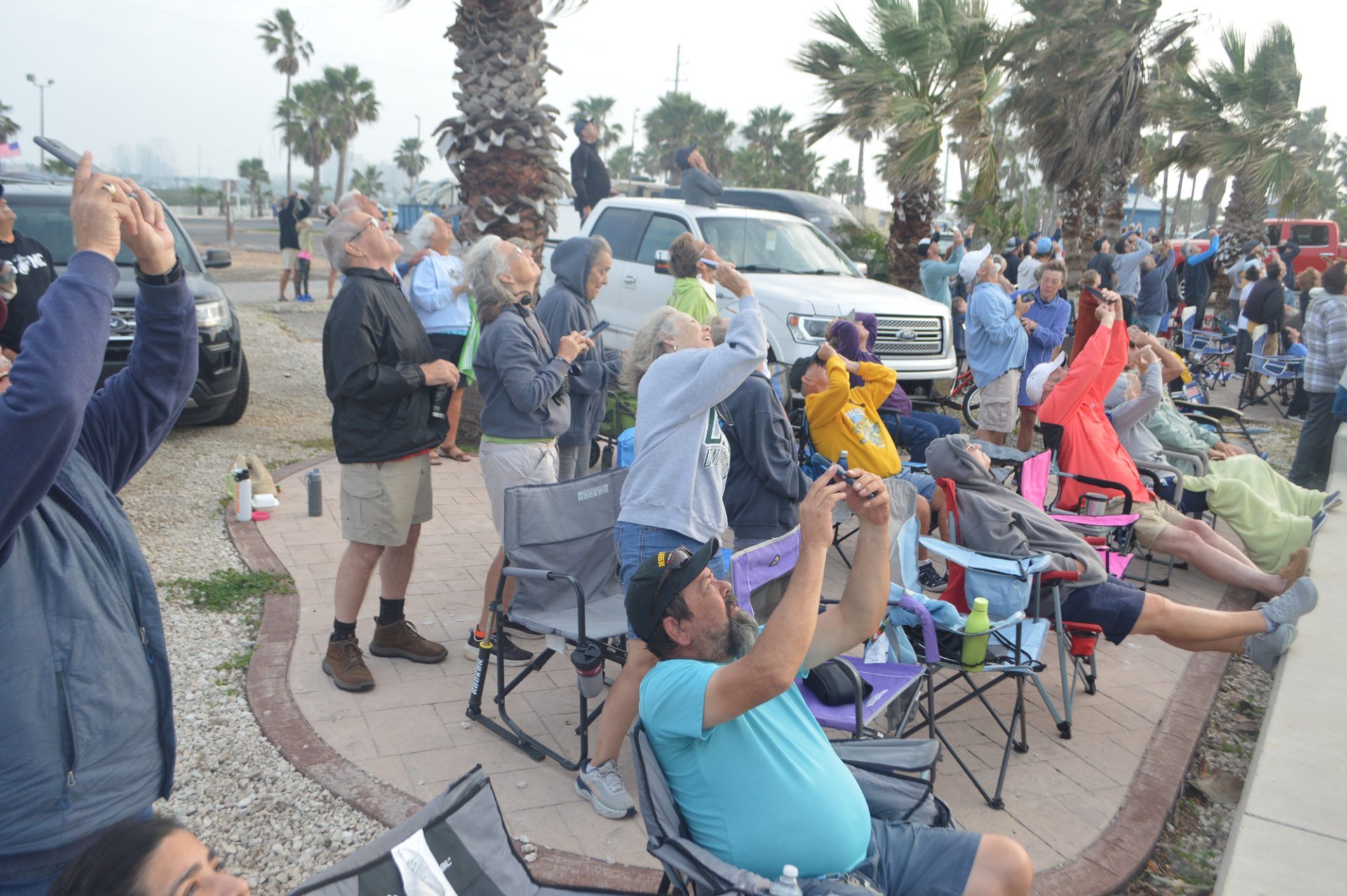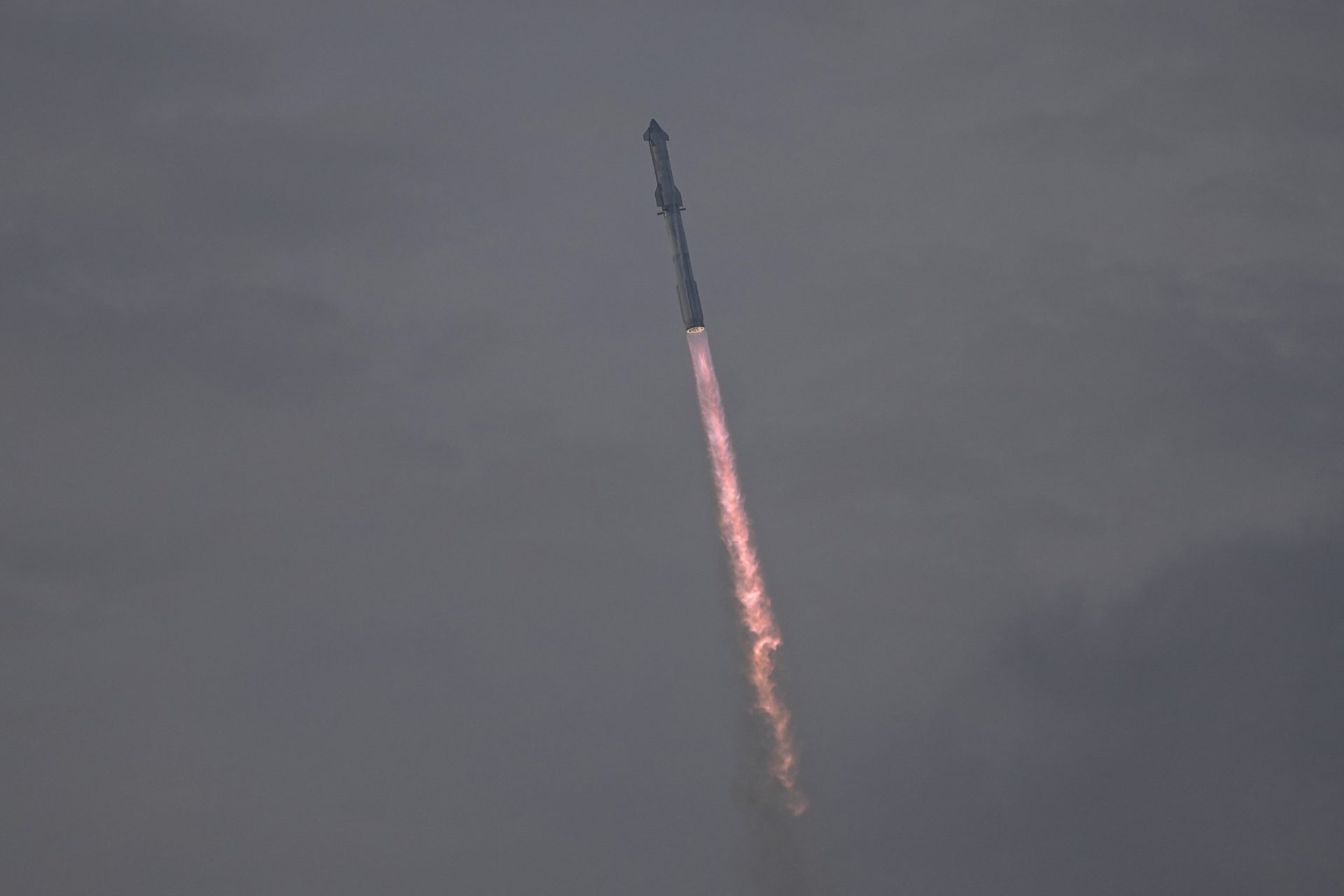|
Only have a minute? Listen instead
Getting your Trinity Audio player ready...
|
Starship S28 and Super Heavy B10, loaded with more than 10 million pounds of propellant, lifted off from Boca Chica/Starbase at 8:25 a.m. Thursday for SpaceX’s third Starship orbital flight attempt, after being granted permission by the Federal Aviation Administration on Wednesday.
It was by far Starship’s most successful orbital test to date, with the vehicle actually reaching orbit for the first time and beginning its fiery reentry through the Earth’s atmosphere before being lost.
At 9:31 a.m., after roughly 15 minutes of no signal from the ship and a little over 60 minutes after launch, SpaceX ground control pronounced S28 lost and said a hard landing in the Indian Ocean would not take place as planned.

The uncrewed Starship reached an altitude of more than 124 miles and a speed of more than 16,000 mph during its flight.
“It is the furthest and fastest Starship has ever flown,” said Katy Tice, SpaceX Quality Systems Engineering senior manager and commentator during the test flight.
Tice noted that Starship was “the biggest flying object ever in space.”
When “stacked,” the Starship and Super Heavy stand at more than 400 feet tall. At more than twice the thrust of the Saturn V rocket, which powered the Apollo missions (1968-1972), Super Heavy is the most powerful launch vehicle ever developed.
Despite a planned soft splashdown in the Gulf of Mexico about 20 miles offshore, the B10 was apparently destroyed by its onboard flight termination system (FTS) seven minutes after launch, when its engines failed to relight for a controlled descent.
However, Starship successfully ignited all six of its engines during stage separation, shutting them down again as scheduled at 8:37 minutes into the flight for the coast into orbit. The first ever opening and closing of Starship’s payload door was also successful, though a planned relighting of the vehicle’s engines in space was aborted.

During the orbit phase, before contact with the ship was lost and during a pause in the real-time commentary, SpaceX’s livestream showed Starship in high definition — courtesy of a fin-mounted camera — rotating slowly high above the luminous, blue and white arc of the Earth, retro elevator music serving as the soundtrack.
During reentry, the camera, transmitting images via Starlink, showed the aft portion of Starship glowing orange from the plasma field generated by extreme friction and heat as it met Earth’s atmosphere at hypersonic velocity, in this case five times the speed of sound. The soft glow of the signal-interrupting plasma shield gave way to dazzling orange and white flame as the vehicle entered what was described as “peak heating.” At just under 49 minutes into the flight, the signal from Starship was lost for good.
Thursday’s test flight showed dramatic progress for SpaceX compared to the first and second orbital flight attempts, on April 20 and Nov. 18 of last year. In the first test, Super Heavy’s engines obliterated the concrete launch pad, sending pieces of it flying for hundreds of feet in all directions, and Starship and Super Heavy were destroyed just a few minutes after launch, when stage separation failed to occur and the vehicle veered out of control. Still, SpaceX deemed it successful because of the valuable data collected during the brief flight.

On Nov. 18, stage separation succeeded using a new technique, “hot staging,” in which Starship ignited its engines to facilitate separation from Super Heavy. Though the booster self-destructed before it could splash down in the Gulf as planned, Starship flew for a full eight minutes, nearing the end of its engine burn, before an anomaly triggered its FTS. Hot staging was also used Thursday with success.
As always, SpaceX said it will use the huge amount of telemetry (in-flight) data gathered to make improvements to Starship and Super Heavy in order to boost the chances of a 100% successful mission next time around.
Although it was all over by mid-morning, Tice called it “an exciting end to what has been an exciting day.”
“Overall it’s been pretty great,” she said.
SpaceX founder and CEO Elon Musk posted on the social media site X, which he owns: “Starship reached orbital velocity! Congratulations @SpaceX team!!”




